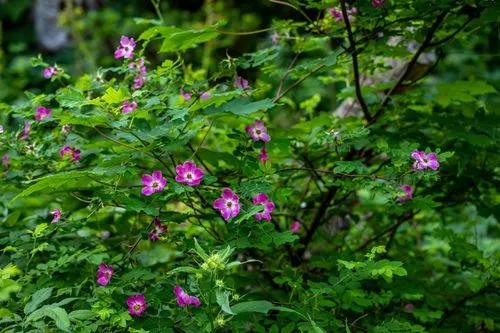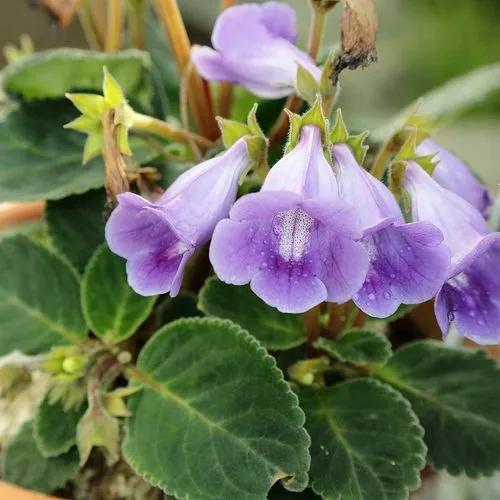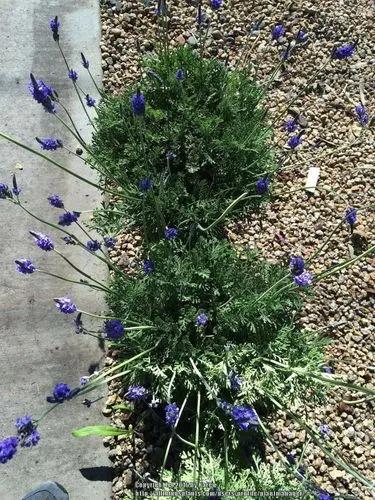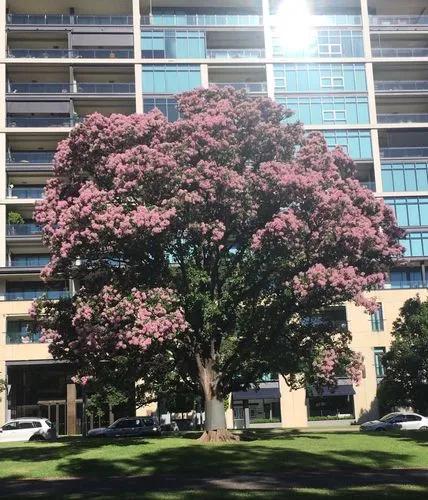Viburnum lentago, commonly called nannyberry, is a large, upright, multi-stemmed, suckering, deciduous shrub which typically grows to 10-18' tall with a spread of 6-12', but may also be grown as a small, single trunk tree which may reach a height of 30'. Non-fragrant white flowers in flat-topped cymes (to 4.5" diameter) appear in spring. Flowers give way in autumn to blue-black, berry-like drupes which often persist into winter and are quite attractive to birds and wildlife. Ovate, finely toothed, glossy dark green leaves (to 4" long) are abruptly long-pointed. Variable fall color ranges from drab greenish-yellow to reddish-purple. Although widespread in eastern North America, this plant is only known to exist in Missouri in low woods and wooded slopes in Schuyler County. Fruits are edible and may be eaten off the bush when ripe or used in jams and jellies.
Nannyberry Viburnum Care
Viburnum Lentago



It is a large shrub or small tree growing upwards to 9 m (30 ft) tall with a trunk up to 25 cm (10 in) in diameter and a short trunk, round-topped head, pendulous, flexible branches. The bark is reddish- to grayish-brown, and broken into small scales. The twigs are pale green and covered with rusty down at first, later becoming dark reddish brown, sometimes glaucous, smooth, tough, flexible, and produce an offensive odor when crushed or bruised. The winter buds are light red, covered with pale scurfy down, protected by a pair of opposing scales. Flower-bearing buds are 2 cm (3⁄4 in) long, obovate, long pointed; other terminal buds are acute, 8.5 to 12.7 mm (1⁄3 to 1⁄2 in) long, while lateral buds are much smaller. The bud scales enlarge with the growing shoot and often become leaf-like. Like all viburnums, the leaves are arranged in opposite pairs on the twigs; they are oval, 5–10 cm (2–4 in) long and 2–5 cm (3⁄4–2 in) broad, wedge-shaped, rounded or subcordate at base, with an acuminate apex and a finely serrated margin, and a winged petiole. They open from the bud involute, bronze green and shining, hairy and downy; when full grown are bright green and shining above, pale green and marked with tiny black dots beneath. In autumn they turn a deep red, or red and orange. The flowers are small, 5–6 mm (0.20–0.24 in) in diameter, with five whitish petals, arranged in large round terminal cymes 5–12 cm (2–4 3⁄4 in) in diameter; flowering is in late spring. The calyx is tubular, equally five-toothed, persistent; the corolla is equally five-lobed, imbricate in the bud, cream-white, one-quarter of an inch across; lobes acute, and slightly erose. There are five stamens, inserted on the base of the corolla, alternate with its lobes, exserted; filaments slender; anthers bright yellow, oblong, introrse, versatile, two-celled; cells opening longitudinally. The pistil has a one-celled inferior ovary, the style thick, short, light green, and the stigma broad; there is one ovule in each cell. The fruit is a small round blue-black drupe, 8–16 mm (0.31–0.63 in) long on a reddish stem; it is thick-skinned, sweet, and rather juicy. The stone is oblong oval, flattened. The roots are fibrous. The wood is ill-smelling, dark orange brown, heavy, hard, close-grained, with a density of 0.7303.
How to Care for the Plant

Popularity

195 people already have this plant 13 people have added this plant to their wishlists
Discover more plants with the list below
Popular articles






